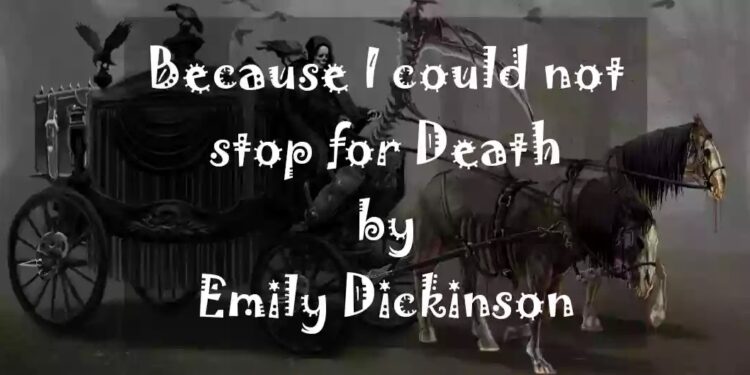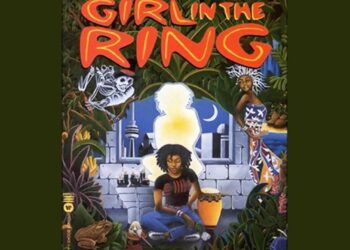Analyze the use of metaphor in Emily Dickinson’s Because I could not stop for Death
Metaphor is a powerful literary device that allows writers to convey complex ideas and emotions by drawing comparisons between unrelated concepts. In Emily Dickinson’s renowned poem, “Because I could not stop for Death,” she employs metaphor to explore the theme of mortality and the journey towards death.
The metaphor in Because I could not stop for Death:-Through her skillful use of metaphor, Dickinson paints a vivid picture of death as a companion on a carriage ride, creating a rich and contemplative exploration of the human experience. This essay aims to delve into the various metaphors employed in the poem and analyze their significance in shaping the poem’s deeper meaning.
Also Read:-
- How does Alice Walker use the concept of the color purple in The Color Purple
- Analyze the use of symbolism in Kate Chopin’s The Awakening
- Discuss the theme of innocence in J.D. Salinger’s The Catcher in the Rye
- How does James Joyce use the concept of stream of consciousness in Ulysses
1. The Metaphor of Death as a Gentleman Caller: The opening line, “Because I could not stop for Death,” immediately introduces the central metaphor of the poem. Here, Death is personified as a gentleman caller who graciously stops to pick up the speaker, symbolizing the inevitability of mortality.
This metaphor not only challenges the conventional portrayal of death as a frightening force but also presents it as an accepted and ordinary occurrence in life.
2. The Carriage Ride as a Metaphor for Life’s Journey: As the poem unfolds, Dickinson continues the metaphor by describing the carriage ride the speaker takes with Death. The carriage ride represents the journey of life, with its stages and milestones.
The metaphor in Because I could not stop for Death:-Dickinson uses imagery such as “the Carriage held but just Ourselves,” suggesting that the speaker’s companionship with Death is a solitary one, emphasizing the personal nature of the journey towards death.
3. The Scenery and Senses as Metaphors for the Passage of Time: Throughout the poem, Dickinson incorporates rich descriptions of the scenery passing by during the carriage ride. These descriptions act as metaphors for the passage of time and the various stages of life.
The metaphor in Because I could not stop for Death:-For example, the line “We passed the School, where Children strove” represents youth and the pursuit of knowledge. Similarly, “Fields of Gazing Grain” signifies the prime of adulthood and productivity. These metaphors not only capture the fleeting nature of life but also underscore the inevitability of its progression towards death.
4. The Setting Sun as a Metaphor for the End of Life: In the fourth stanza, Dickinson employs the metaphor of the setting sun to symbolize the speaker’s arrival at the end of life. She writes, “Or rather, He passed us; / The Dews drew quivering and chill, / For only Gossamer, my Gown, / My Tippet, only Tulle.”
The metaphor in Because I could not stop for Death:-The setting sun represents the passage from life to death, and the use of the word “quivering and chill” evokes a sense of finality and coldness associated with death.
The speaker’s transformation into “Gossamer” and “Tulle” suggests the ephemeral and delicate nature of life, further emphasizing the transitory essence of existence.
5. The Grave as the Final Dwelling Place: Finally, the metaphor of the grave is introduced in the final stanza. The speaker describes her new home, stating, “Since then – ’tis Centuries – and yet / Feels shorter than the Day / I first surmised the Horses’ Heads / Were toward Eternity.”
The metaphor in Because I could not stop for Death:-Here, the grave represents the final resting place, a departure from the physical world. The concept of eternity is presented as a paradox, as the speaker suggests that the centuries since her death feel shorter than the day she first realized her mortality.
The metaphor in Because I could not stop for Death:-This metaphor highlights the perpetual nature of death while questioning the perception of time and the human experience.
Because I could not stop for Death “Themes”
“Because I could not stop for Death” is a renowned poem written by Emily Dickinson. It explores several themes that reflect on the nature of life, death, and the passage of time. Some of the prominent themes found in the poem include:
- Mortality: The poem grapples with the inevitability of death and portrays it as an unavoidable part of the human experience. Death is personified as a gentleman caller who accompanies the speaker on a carriage ride toward the afterlife, symbolizing the journey from life to death.
- Immortality and Eternity: While the poem acknowledges the reality of death, it also raises questions about the possibility of immortality or an afterlife. The notion of eternity is suggested by the depiction of the carriage ride passing through various stages, such as childhood, maturity, and the grave, implying an ongoing existence beyond death.
- Time and its passage: The poem reflects on the concept of time and its effect on human life. The leisurely pace of the carriage ride, with its measured descriptions of different scenes, suggests that time is relative and can feel both slow and swift. The poem emphasizes the importance of reflecting on life’s fleeting moments as they lead toward the ultimate destination of death.
- Transience of earthly existence: Throughout the poem, there is an emphasis on the impermanence of human life and earthly pursuits. The speaker observes scenes such as children playing and fields of grain, highlighting the fleeting nature of these experiences in the face of mortality.
- Immersion in nature: Nature is a significant element in the poem, as it is often used to symbolize the cycle of life and death. The passing scenes in the poem, such as the setting sun and the grazing horses’ heads, connect the speaker’s journey with the natural world.
Conclusion
Emily Dickinson’s “Because I could not stop for Death” stands as a testament to the power of metaphor in poetry. By utilizing metaphors throughout the poem, Dickinson skillfully crafts a nuanced and thought-provoking exploration of mortality and the human experience.
The metaphor in Because I could not stop for Death:-The metaphor of Death as a gentleman caller challenges societal perceptions of death, presenting it as a natural and inevitable part of life.
The extended metaphor of the carriage ride as a metaphor for life’s journey showcases the stages and milestones that define our existence, emphasizing the personal and solitary nature of the journey towards death.
The metaphor in Because I could not stop for Death:-Moreover, Dickinson’s use of metaphors to depict the passage of time through imagery and senses underscores the fleeting and transient nature of life. The vivid descriptions of the scenery passing by during the carriage ride serve as metaphors for the different stages of life, illustrating the progression towards death.
The metaphor of the setting sun symbolizes the end of life, evoking a sense of finality and coldness associated with death.
The metaphor in Because I could not stop for Death:-The poem’s metaphorical representation of the grave as the final dwelling place highlights the perpetual nature of death while challenging our perception of time and the human experience. By suggesting that the centuries since her death feel shorter than the day she first realized her mortality, Dickinson raises profound questions about the nature of eternity and the limitations of human understanding.
FAQ.
Q: What is the meaning of “Because I could not stop for Death”?
A: The poem explores the themes of mortality, the passage of time, and the acceptance of death. It presents death as an inevitable and natural part of life, portraying it as a gentle escort on a carriage ride through various stages of existence.
Q: Who is the speaker in the poem?
A: The speaker is typically interpreted as a deceased person reflecting on their journey from life to death. The speaker’s perspective and voice provide insights into the themes and ideas presented in the poem.
Q: How does Dickinson personify Death in the poem?
A: Dickinson personifies Death as a gentleman caller who arrives unexpectedly and takes the speaker on a carriage ride. By portraying Death as a courteous companion, the poem presents a less ominous and more accepting view of mortality.
Q: What does the poem suggest about the afterlife or immortality?
A: While the poem does not explicitly delve into the nature of the afterlife or immortality, it implies the possibility of an ongoing existence beyond death. The carriage ride through different stages suggests a continuation of existence, and the mention of the grave hints at an afterlife or eternal rest.
Q: How does the poem explore the theme of time?
A: The poem reflects on the passage of time and the fleeting nature of human life. The leisurely pace of the carriage ride and the descriptions of various scenes, such as children playing and the setting sun, emphasize the significance of appreciating and reflecting upon the moments of life as they lead to death.
















